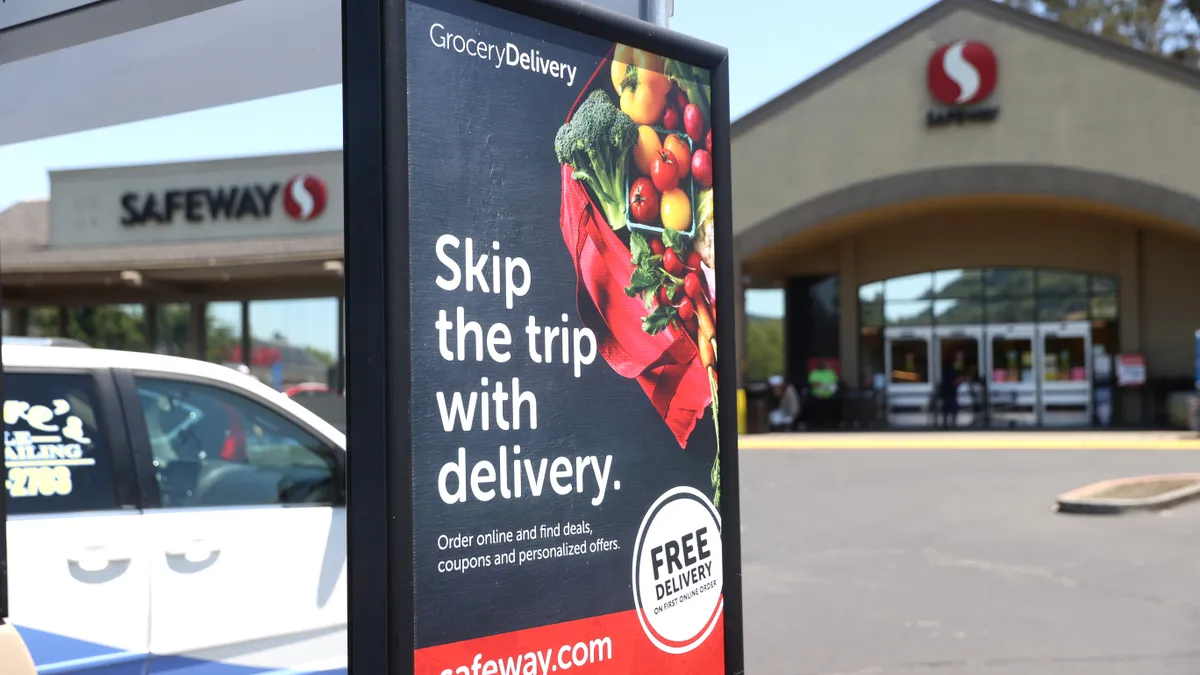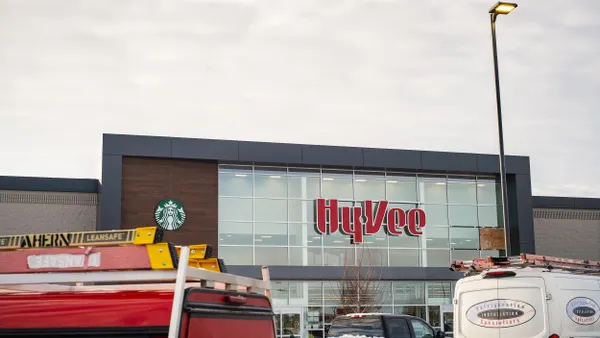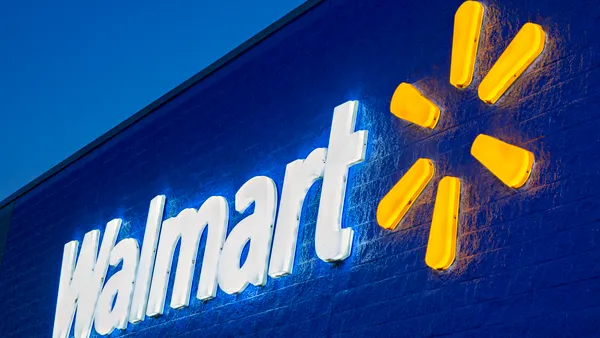Dive Brief:
- Albertsons is looking to strengthen its business around its growing customer engagement efforts, executives said during the company's fourth-quarter call Tuesday morning. The number of consumers enrolled in the company's loyalty program has increased 45% on a two-year stack, to 30 million.
- Building on its growing and recently revamped loyalty program, Albertsons outlined its “next phase of transformation” with a focus on its customers and retaining their loyalty for life, CEO Vivek Sankaran said on the Q4 earnings call on Tuesday.
- “We want our customers to interact with us daily, not only to shop but sometimes to simply consume relevant content about food or plan meals or find information to inspire their wellbeing,” Sankaran told investors. “Our business model is pivoting to one that is loyalty based, doubling down on our omnichannel engagement with customers beyond just transactions.”
Dive Insight:
Albertsons is pivoting to a “customers for life” strategy that draws together the momentum the grocer has made in several areas, including rolling out e-commerce options, improving its fresh departments and in-store experiences, expanding private labels and modernizing its supply chain, Sankaran said.
“‘Customers for life’ is built around this belief that satisfied customers create outsized lifetime value, and that everything we do should enable [the] most stickiness,” Sankaran said.
Deepening customer loyalty could help Albertsons as inflation, which rose 8.5% in March, increasingly weighs on shoppers' wallets. In response to investor questions on Tuesday, Sankaran said Albertsons is expecting additional challenges ahead, like continued product availability issues for both private label and national brands. COVID-19 vaccinations, which have totaled 12 million across the grocer’s banners so far, are also expected to drop 65%, executives noted.
In the fourth quarter, which ended Feb. 26, Albertsons’ identical store sales increased 7.5% year-over-year and 19.3% on a two-year stack, helped by continued inflation and market share gains, Sharon McCollam, the grocer’s president and chief financial officer, said on the call.
Meanwhile, the grocer saw digital sales increase 5% and recorded $437 million in adjusted net income for the quarter.
Albertsons’ “better than expected” Q4 results were driven by four key strategic initiatives, Sankaran said: focusing on in-store as the foundation for customer experiences, speeding up digital and omnichannel capabilities, increasing productivity, and strengthening its talent and culture.
On the in-store side, Albertsons has worked to improve inventory management, like rolling out automated production planning in its fresh departments. In fiscal year 2021, Albertsons completed 236 store remodels and opened 10 new stores, along with introducing more than 830 new private label products.
In e-commerce, Albertsons launched a new unified mobile app, which the grocer plans to add recipes for dietary preferences like vegetarian or gluten-free and pharmacy access to, Sankaran said. The company noted its Drive Up & Go service, which is available at more than 2,000 locations, reaches 99% of its customers, while its delivery options have also expanded.
Albertsons is also working to ramp up its new retail media network, called Albertsons Media Collective. While Sankaran acknowledged Albertsons is behind other retailers like Kroger in developing its own retail media network, he said he expects the business to be a leading growth and profit driver going forward.
Albertsons is expected to reach its target of $1.5 billion in productivity savings by the end of fiscal year 2022, executives noted. Already, the grocer has found more than $750 million of future savings to work on between fiscal years 2023 and 2025 in areas like automation and digital tools, scalable workforce management and supply chain modernization, McCollam said.
For fiscal year 2021, Albertsons recorded an identical store sales decrease of 0.1% and a digital sales bump of 5%. For fiscal 2022, the grocer is expecting identical store sales to increase 2% to 3% mainly due to inflation and continued market share gains, McCollam said.
Three main areas of investment for the grocer in the fiscal year will be digital transformation, modernization of its supply chain and growing its retail media network, she said.
“Productivity tailwinds are also substantially offsetting a significant increase in hourly wages and benefits for our frontline associates,” she noted, noting capital expenditures are estimated to total between $2 billion to $2.1 billion, with more than half of the spending on the modernization and digitization of stores.
In announcing its Q4 results, Albertsons noted it does not yet have an update on its strategic review, which it announced at the end of February and prompted speculation by one Wall Street analyst that the grocer may sell underperforming banners.












